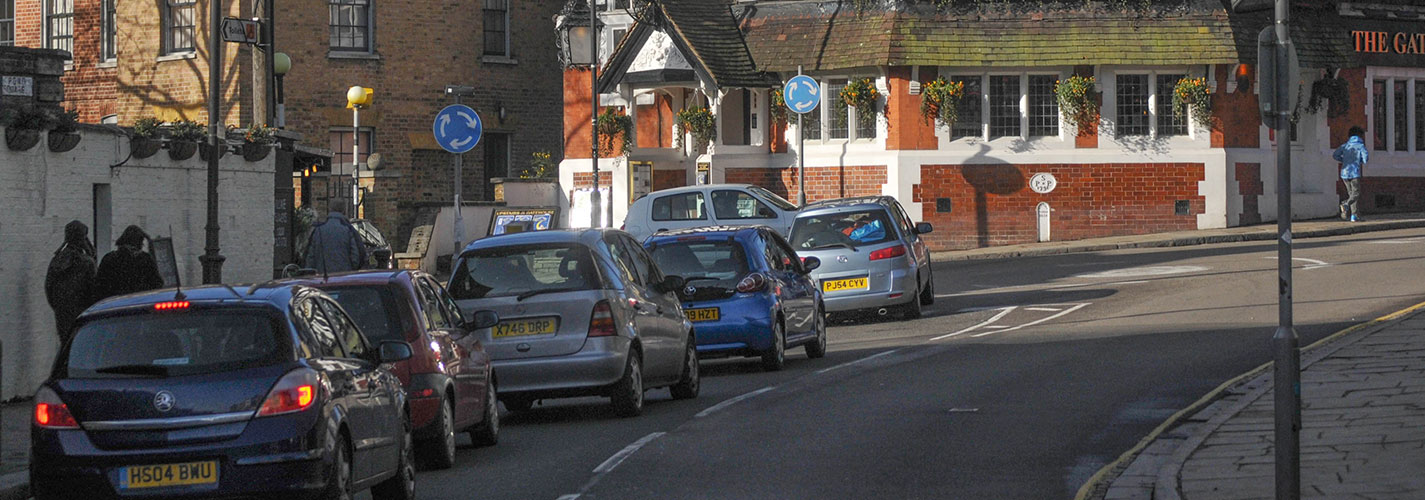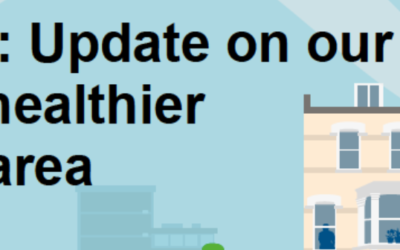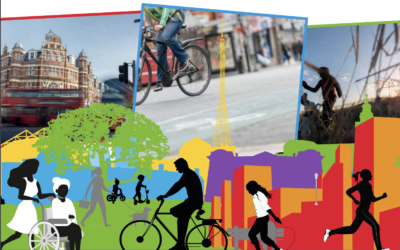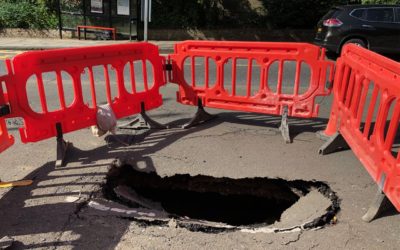Traffic & Transport

Why it matters
What we’re doing
Hoppa buses
We are meeting with TfL to discuss Hoppa and low emission buses for our area. We have organised meetings with TfL and other local neighbourhood forums to push forward the idea of having a Hoppa service that links our communities from east to west.
Air quality
Our air quality work includes monitoring pollution levels and advocating for improvement. We are looking to link with wider London initiatives, such as London Mayor Sadiq Khan’s Clean Air campaign. We are also fighting for the use of low emission or electric vehicles to help improve the air quality in Highgate.
Other initiatives
Other projects we are involved in include:
- Support for a Liveable Neighbourhood Funding bid
- Input on Camden Council’s parking consultation
- Work on speeding, HGVs, junctions and crossings
What the Plan says
Promoting sustainable movement (Policy TR1)
Where justified by a site’s location and the character of the proposed development, and where the delivery of an otherwise sustainable development would not be threatened, smaller developments may also be expected to make provision for better pedestrian, cyclist or public transport access.
Provision may include:
I. Convenient, safe and well-signed routes, including footways and cycleways designed to appropriate widths;
II. Other features associated with pedestrian and cycling access to the development, where needed, for example seating for pedestrians, signage, high-quality cycle parking, workplace showers and lockers;
III. Safe road crossings where needed;
IV. Bus stops, shelters, passenger seating and waiting areas, signage and timetable information.
(Major development is defined as residential development of 10 or more units, and commercial development of at least 1,000 sqm or a site area of at least one hectare.)
Movement of heavy goods vehicles (Policy TR2)
I. Have a construction management plan (CMP) and – where appropriate because they are likely to generate delivery vehicles and/or refuse trucks – servicing management plan (SMP) showing the proposed logistics of heavy goods vehicle movements – this will be required for any major development. For smaller developments, the Councils will consider the requirement for a CMP or SMP, having regard to access issues and the potential impact on the local road network, and impact on properties in the vicinity of the development site. It will be designed to keep disruption to a minimum. These CMPs and SMPs will be secured through a condition attached to the permission or through a section 106 planning obligation, and must be agreed with the council prior to the commencement of works;
II. Wherever possible, avoid the need for additional movement of vehicles of 7.5 tonnes in predominantly residential areas;
III. Must make every effort to accommodate goods and service vehicles on site, during and after construction; and
IV. Seek opportunities to minimise disruption for the local community through effective management, including through the optimisation of collection and delivery timings, cleaning roads of building-related waste and the use of low-emission vehicles for deliveries.
Minimising the impact of traffic arising from new development (Policy TR3)
I. That a transport assessment has been carried out, or a transport statement prepared, to quantify future vehicle movements to, from and within the site including links to existing transport networks. Appropriate connections to highways and street spaces should then be put forward to serve the development;
II. Proposals should provide information on planned parking arrangements to demonstrate that there would be no detrimental loss of on-street parking or harmful impact from additional parking on the surrounding area and transport network;
III. Developments requiring pick-up, drop-off, or waiting areas, should put forward appropriate arrangements within the site where possible which will ensure safety and minimise congestion; and
IV. The development should protect and exploit opportunities for the use of sustainable transport modes for the movement of people and goods. In order to minimise traffic movements and parking demand and any associated harmful impacts, travel plans should be prepared and implemented in accordance with guidance from Transport for London and the Boroughs of Haringey and Camden.
Reducing the negative impact of parking in Highgate (Policy TR4)
Development should not have severe negative impact on the highways or the environment. It will be resisted if it would:
I. Harm Highway safety or hinder pedestrian movement;
II. Provide inadequate sightlines for vehicles leaving the site;
III. Significantly add to on-street parking demand or otherwise reduce existing on-street parking conditions, where there is inadequate capacity;
IV. Create a shortfall of provision in terms of relevant parking standards for bicycles, people with disabilities and service vehicles;
V. Create a shortfall of public car parking, operational business parking or residents’ parking;
VI. Create, or add to, an area of car parking that would have an adverse impact on the local character or a building’s setting or is visually detrimental to the conservation areas.
VII. Any new off-street parking should have regard for its impact on the character of the local area, and could be required to preserve or re-provide any means of enclosure, trees or other features of a forecourt or garden; and
VIII. Provide adequate soft landscaping, permeable surfaces, boundary treatment and other treatments to offset adverse visual impacts and increases in surface water run-off.
Private residential development of a plot that intends to maintain existing off-street parking can be exempt from the car-free parking restrictions. Any development that covers an area of existing off-street parking will need to explain the impact of the proposals on parking. As explained in III above, it must not add to on-street parking.
Dropped kerbs and cross-overs (Policy TR5)
I. They are either not in areas of high parking stress or a CPZ, or they are in areas of high parking stress but will alleviate the demand for on-street parking through the provision of off-street parking for more than one existing dwelling; and
II. They would not negatively impact on the character of the area, particularly conservation areas (such as through the proposed removal of character enhancers such as walls and trees); and
III. They would not have a negative impact on pedestrian and highways safety; and
IV. Appropriate on-site drainage, such as permeable surfaces, achieving run-off rates which are no greater than the existing situation, and wherever possible are reduced, so as to mitigate against off-site flooding caused by run-off from off-street parking schemes.
Non-statutory actions
CA18: Make the case for more and safer road crossing, wider pavements and more Rights of Way, where possible.
CA19: Review parking regulations to improve access for those wishing to shop or visit, and ensure that the streets that suffer from parking stress cease to be a haven for commuter parking. Work with the two boroughs to introduce common rules and practices in the boundary area. Introduce spaces for motor bikes.
CA20: Encourage schools to reduce the traffic problems associated with the school run.
CA21: Seek to ensure that the councils maintain and improve roads to make them safer, including less vicious speed bumps and better-engineered junctions.
CA22: Improve the provision of public transport, including east-west traffic routes and better interchanges.
CA23: Encourage the use of “shared surfaces” when they would be safe.
CA24: Make movement easier and safer for disabled people and those with buggies/children.
CA25: Promote the use of technology regarding bus times, to minimise waits at stops and speed journeys.
CORE OBJECTIVE
“To enhance accessibility to local services and support the community’s health, social and cultural wellbeing.”
TRAFFIC & TRANSPORT POSTS
Camden make Swain’s Lane changes permanent
HNF response to Haringey’s Walking and Cycling Action Plan
A number of HNF Committee members have commented on this Action Plan. We hope their thoughts will encourage others to comment on the Plan and, of course, influence Haringey’s future policy. Maggy Meade-King, HNF Secretary and lead HNF Green Working Party We welcome...
Sink holes in Highgate
Residents might well have seen the sink holes that appeared after the rain last Monday - one on Hampstead Lane and one on Highgate Hill. https://www.hamhigh.co.uk/news/sinkhole-hampstead-lane-highgate-8153724 This blog asks you to let us know of any other major...
Highgate needs YOU
The Forum is made up of people like you who care about making Highgate a better place to live and work. Come join us!
Email us at info@forhighgate.org
FOLLOW US



